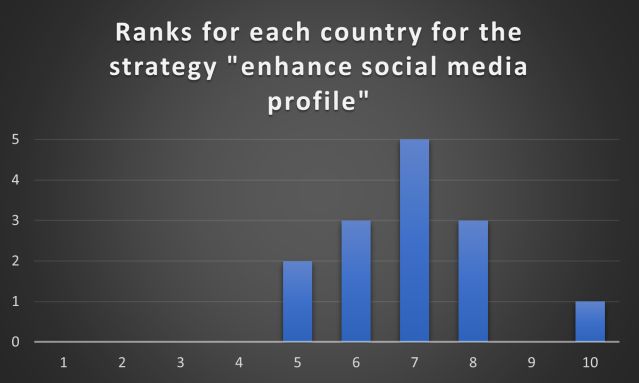Mating
Top 10 Strategies for Self-Enhancement: A Worldwide Study
Exploring the universality of self-enhancement strategies across cultures.
Posted October 25, 2023 Reviewed by Lybi Ma
Key points
- New research identifies 10 self-enhancement strategies from enhancing looks to hiding undesirable qualities.
- Across 14 countries, differences in strategy use emerge, among striking similarities.
- Self-enhancement strategies may develop quite rigidly despite cultural influence.
Not everyone is equally desirable as a prospective romantic partner. Luckily, there are ways to enhance and maximise one’s desirability. In some cases, multi-billion-dollar industries build themselves around these strategies – providing make-up, gym memberships, and even therapy to work on oneself. But where do self-enhancement strategies come from? Are they simply a product of culture, or is there something more?
Studying human universals using cross-cultural studies
Cross-cultural studies are a great way of exploring how different norms, values, and societal make-ups influence human behaviour. For evolutionary psychologists, they can serve another purpose—to help us understand how rigidly our psychology develops in different environments.
To bust a myth, while evolutionary psychologists generally believe that humans (a) share a common psychological architecture and (b) aren’t blank slates that learn everything through trial and error, that doesn’t mean we expect human psychology to be rigid and unchangeable.
Instead, we appreciate the adaptive value of a psychology that functions differently depending on the environment and is sensitive to evolutionarily relevant cues. A psychology that downregulates the importance of certain traits in a partner when they are less relevant for successful reproduction, for example.
Understanding what these evolutionary cues are and to what degree they affect our behaviour tells us what parts of our psychology develop rigidly (or highly canalized). If the mate preferences of men in China are somewhat similar to those in Cuba, then this suggests that preferences are only minimally influenced by cultural differences.
In recent years, my own research has shown some remarkable rigidness in mating psychology. Often, cultural differences perform on a stage of similarity—one culture may value social status more than another, yet both cultures still value social status. Focus on the differences between trees, and you might forget they’re part of the same forest.
Strategies for self-enhancement

In our most recent research, we looked at cross-cultural differences in how people try to make themselves more attractive to prospective partners. Trying to put the best foot forward to attract the highest quality mate possible is not a contemporary mating problem, but one faced by our distant ancestors and one that will be faced by our distant descendants.
One idea for how humans solved this problem is that we developed adaptations that allow us to pay attention to the cues others use to assess mate value and to try to enhance our own display of them, either through genuine growth, giving the perception of higher quality, or concealing weakness. In our latest study, we set out to quantify these strategies and to see how similarly they are used in different cultures.
The top 10 strategies
Over 7,000 people from 14 different cultures from the UK to Brazil to the Ukraine rated 87 acts developed from an earlier study on self-promotion in a large sample from Greece. These acts included having plastic surgery, telling stories of one’s triumphs, and exaggerating wealth. Conveniently, they fall into 10 broader categories, shown here in rank order.
- Enhancing looks
- Showing off abilities and talents
- Demonstrating similarity
- Doing more physical exercise and sports
- Increasing income and social status
- Losing weight
- Enhancing social media profile
- Keeping undesirable things hidden
- Showing off and exaggerating wealth, abilities
- Drastically changing appearance
There were some interesting differences overall. We found that women were more likely to enhance their looks than men, who in turn were more likely to show off and exaggerate their wealth and abilities. And older people were more likely to try to increase their income and status while younger people were more likely to conceal things about themselves. But what about the cultural differences?
Seeing the forest for the trees
When we examined the rank order of strategy use, we found some differences overshadowed by remarkable similarities. For example, with the exception of China, every single nation surveyed had “enhance looks” (for example, using make-up) ranked as number 1. Similarly, drastic appearance changes, like having plastic surgery, were at the bottom of the list for 12 countries and second-to-last for the other two.
Even in the middle, where we saw more cross-cultural variation, this was a matter of degree. Take social media enhancement, the strategy with the most cross-cultural variation. Overall, it ranked seven with most countries ranking it as either the sixth, seventh, or eighth most common strategy (see Figure 1). In no country did it appear in the top four ranks. Instead, it formed a nice distribution around seven.

Collectively, these results suggest that self-enhancement strategy use does vary by culture, but that cultural influence comes in the form of a nudge. There might be a slight emphasis or deemphasis, but it’s a far cry from the random distribution (Figure 2) one might expect if people, and the cultures they produce, were the product of generalised learning alone.

Effective or easy?
The next step of our research, as far as I’m concerned, is to examine what determines the popularity of each strategy. Is enhancing looks a dominant strategy because it is the most effective and has the most influence on our ability to attract others? Or perhaps it is simply the easiest strategy to implement next to those that require more time, effort, and resources. Either way, we’ll continue to deepen our insights into the universality of human behaviour through these types of cross-cultural studies.
References
Apostolou, M., Sullman, M., Birkás, B., Błachnio, A., Bushina, E., Calvo, F., ... & Font‐Mayolas, S. (2023). Strategies for becoming a more desirable mate: Evidence from 14 countries. Personal Relationships.
Apostolou, M., Wang, Y., & Gavriilidou, A. (2021). How people become attractive to prospective mates: Strategies of self-promotion in the Greek cultural context. Evolutionary Psychology, 19(4), 14747049211045271.
Thomas, A. G., Jonason, P. K., Blackburn, J. D., Kennair, L. E. O., Lowe, R., Malouff, J., ... & Li, N. P. (2020). Mate preference priorities in the East and West: A cross‐cultural test of the mate preference priority model. Journal of Personality, 88(3), 606-620.




